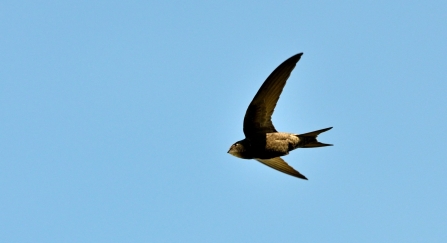Summertime is their time. On warm summer evenings, we can spot them in screaming parties, speeding high above our roofs, sometimes diving down dramatically, chasing each other. Swifts, swallows and martins surely portray a joie de vivre in summertime.
But how do you distinguish them when they're moving so fast and sometimes far up? We've got a few tell-tale signs to look out for to identify each bird easily.





